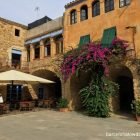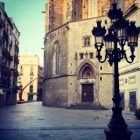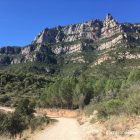Santa Pau is a picturesque medieval village in the Garrotxa Volcanic Zone, 100km north of Barcelona. The village dates back to the ninth century when the region was a no man’s land on the frontier between Christian and Muslim-controlled territories.
With its narrow cobblestone streets and stone buildings, Santa Pau would be an ideal base for exploring the surrounding area, including the Fageda d’en Jordà beech forest, the Santa Margarida volcano and Besalù, another historic medieval village nearby.
What to see and do in Santa Pau
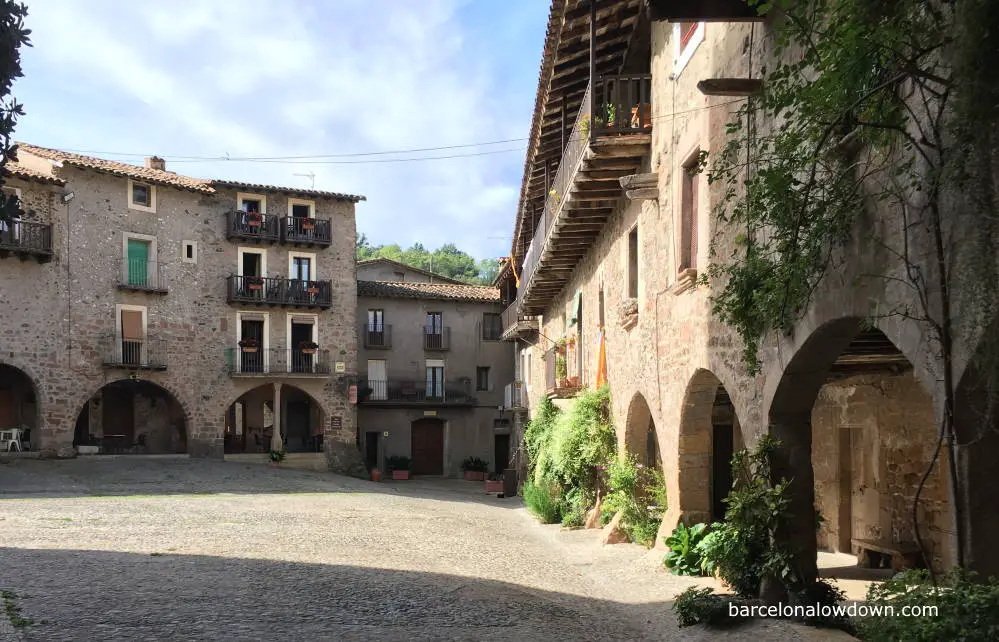
1. Santa Pau Castle
In the centre of the village lies the thirteenth century Castle of Santa Pau. Once home to the Barons of Santa Pau, the castle is an austere, stone manor house with small windows and an inner courtyard. Unfortunately, at the time of writing, the building isn’t open to the public.
2. El Firal dels Bous
Perhaps the most characteristic part of Santa Pau is the triangular main square surrounded by thirteenth-century Gothic buildings. The name of the Plaza, El Firal dels Bous, reflects the fact that a weekly livestock market used to be held here.
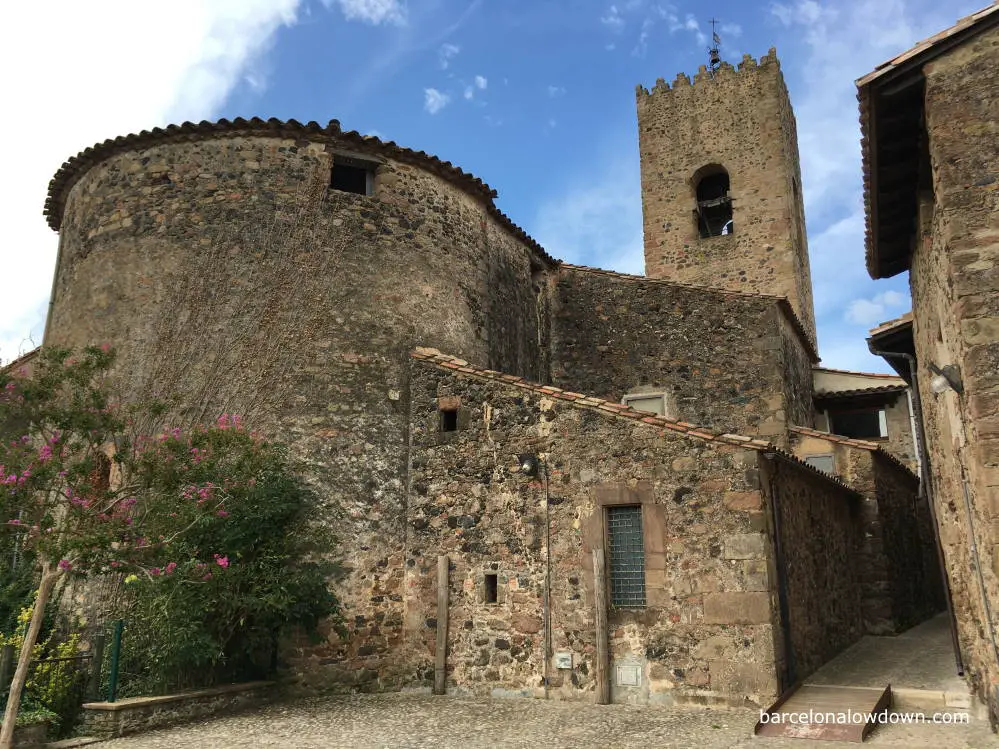
3. Church of Santa Maria
On one side of the plaza stands the Església parroquial de Santa Pau church, which dates back to the fourteenth century and was built by Baron Hug Ademar. Earthquakes badly damaged the original church in 1427, and most of the structure we see today was built towards the end of the fifteenth century.
4. Portal del Mar and Portal de Sant Antoni
The robust stone buildings huddled around the castle form an almost continuous defensive wall. During the middle ages, the only way of entering the village was through three gateways, two of which have survived until the present day.
5. Modern art
As you explore the narrow lanes and alleyways of Santa Pau, be on the lookout for a handful of small quirky statues by local artists which were inaugurated in 1992.
6. Walking and Hiking Trails
There are several marked hiking trails that either start from or pass through Santa Pau. Most of the tracks are listed on the Garrotxa Tourism website and in the Itinerrania app, which lists routes according to difficulty and location.
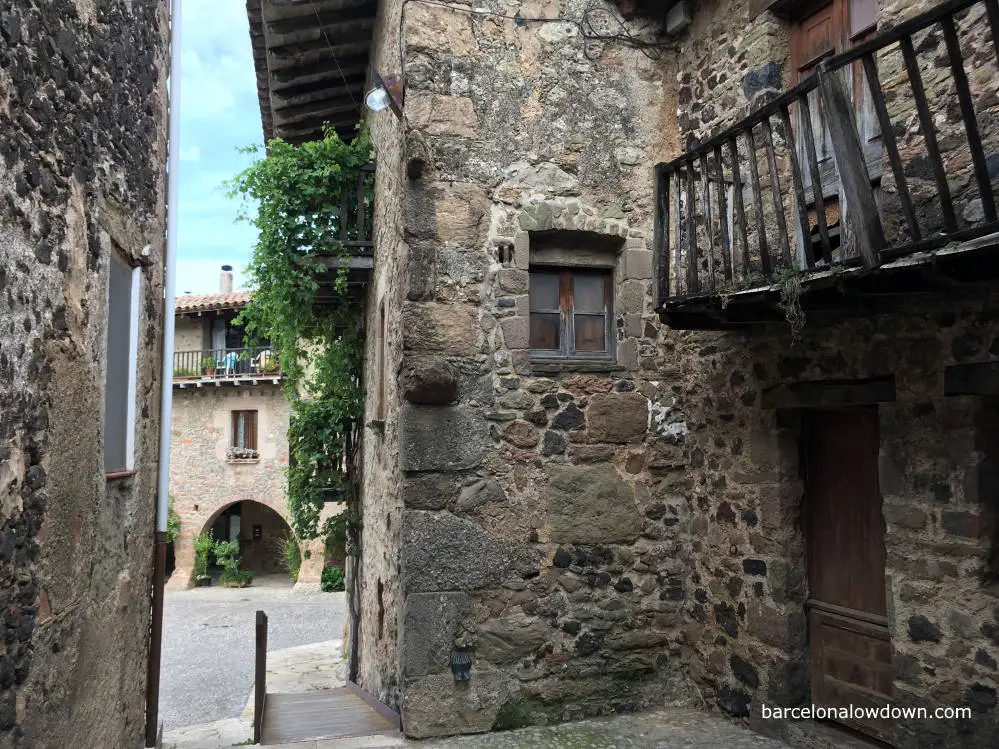
Festivals and events in Santa Pau
La Fira del Fesol
In January, Santa Pau celebrates a culinary fair called La Fira del Fesol. Fesols are a type of bean grown in the area, and during the weekend of the fair, local restaurants set up stalls in the village square where they serve dishes that feature the fesol bean.
You can find more information and the exact dates of the next edition on the Town Hall website.
Where to stay in Santa Pau
We visited Santa Pau as a day trip, but there are several hotels, apartments and rental properties in the village, as well as a handful of restaurants.
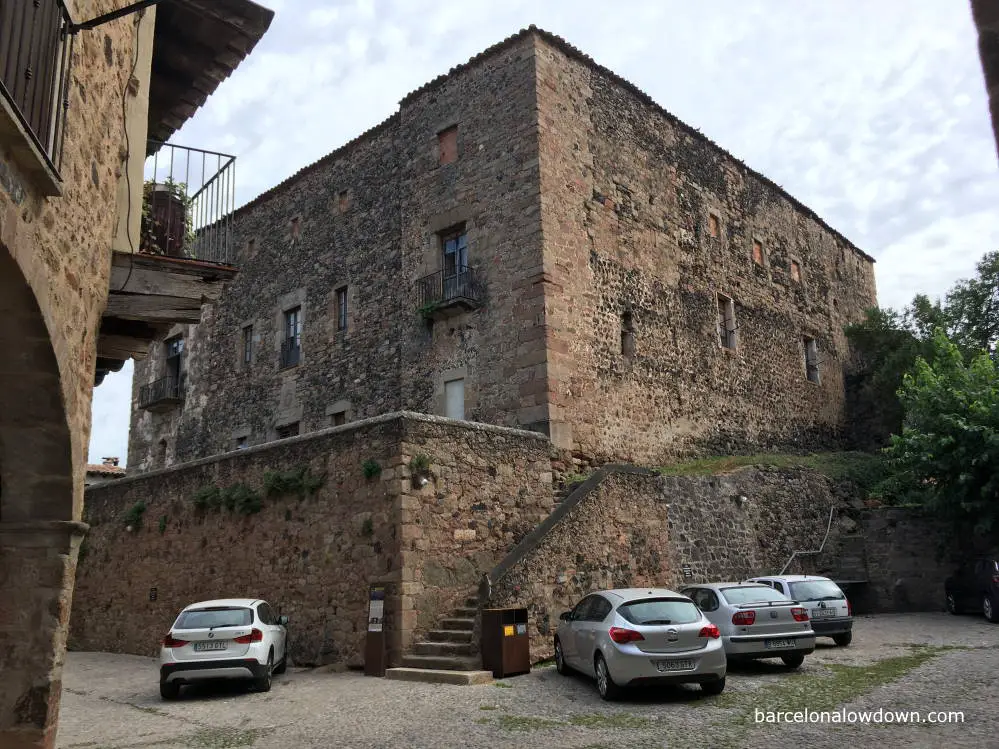
How to get to Santa Pau and where to park
By Car
The easiest way to visit Santa Pau is by renting a car. The village is approximately one hundred kilometres north of Barcelona, and it takes about an hour and three-quarters to get there. Follow the C-17 to Vic, followed by the C-37 to Olot, and finally, the C-524 to Santa Pau.
The old town’s narrow streets are closed to vehicular traffic (except for residents), and there’s a large municipal car park at the entrance to the village.
Arriving on the C-524 from Olot, turn right at the traffic lights onto Carrer Major. Ignore the sign that indicates a car park to your left and continue along Carrer Major. After passing the village hall, turn left onto Carrer del Pont. The municipal car park is on the right-hand side, just after you cross the bridge.
There’s a display board in the car park with a plan of the village and a map of hiking trails in the surrounding area.
By Bus
TEISA runs eleven buses per day from Barcelona to Olot. From here, there are four buses daily to Santa Pau. Check timetables and fares here.
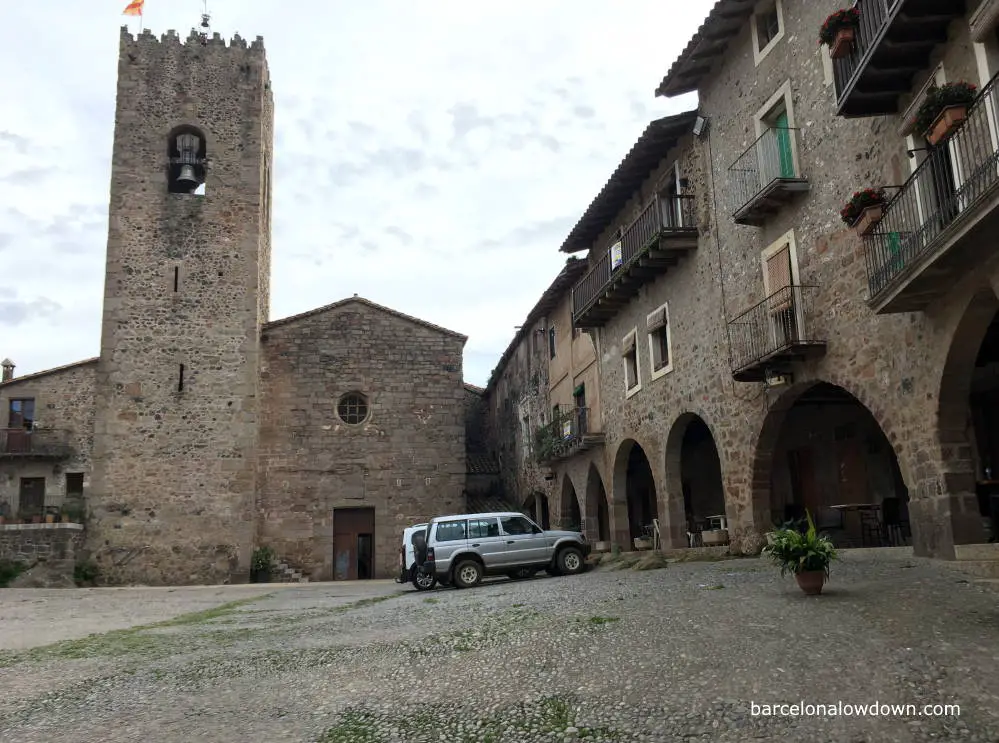
Things to do near Santa Pau
Hot air balloon flights
Local company Vol de Coloms run early morning balloon flights from Santa Pau. The flights, which last approximately ninety minutes, offer unbeatable birds-eye views of the village, volcanos and surrounding countryside. More information here.
Besalú
During the middle ages, Besalú was one of the most important towns in the La Garrotxa region. Today, the town is a popular day trip from Barcelona, whose main attraction is the impressive Romanesque bridge over the River Fluviá.
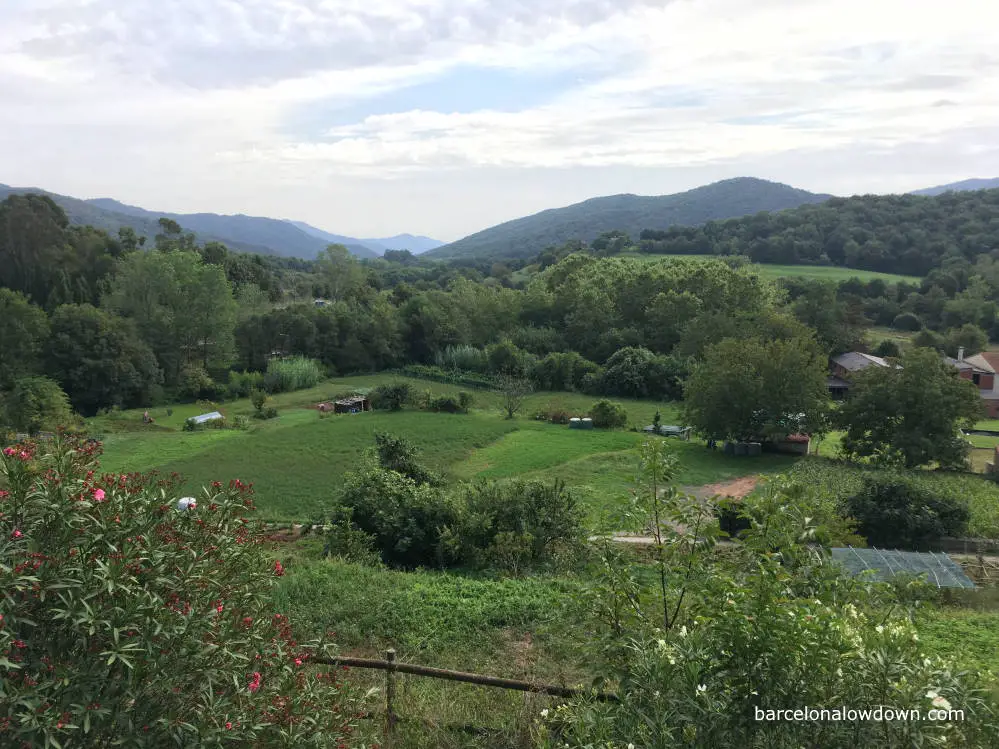
La Fagede d’en Jorda
The Fageda d’en Jorda is a beech forest in the La Gorrotxa Volcanic Zone. This walking route from Olot takes you through the forest before skirting around the Santa Margarida volcano to Santa Pau.
Castellfollit de la Roca
Castellfollit de la Roca is a small village built on a narrow basalt outcrop between the rivers Fluviá and Turonell.
The Croscat and Santa Margarida Volcanos
Route number one on the map below is a popular circular trail that takes you through the Fageda d’en Jorda beech forest and across two of the largest volcanoes in the La Garrotxa Volcanic Zone. The route takes approximately four hours to complete and isn’t overly strenuous.
Alternatively, route number fifteen takes you to the Croscat Volcano and takes approximately forty-five minutes to complete.
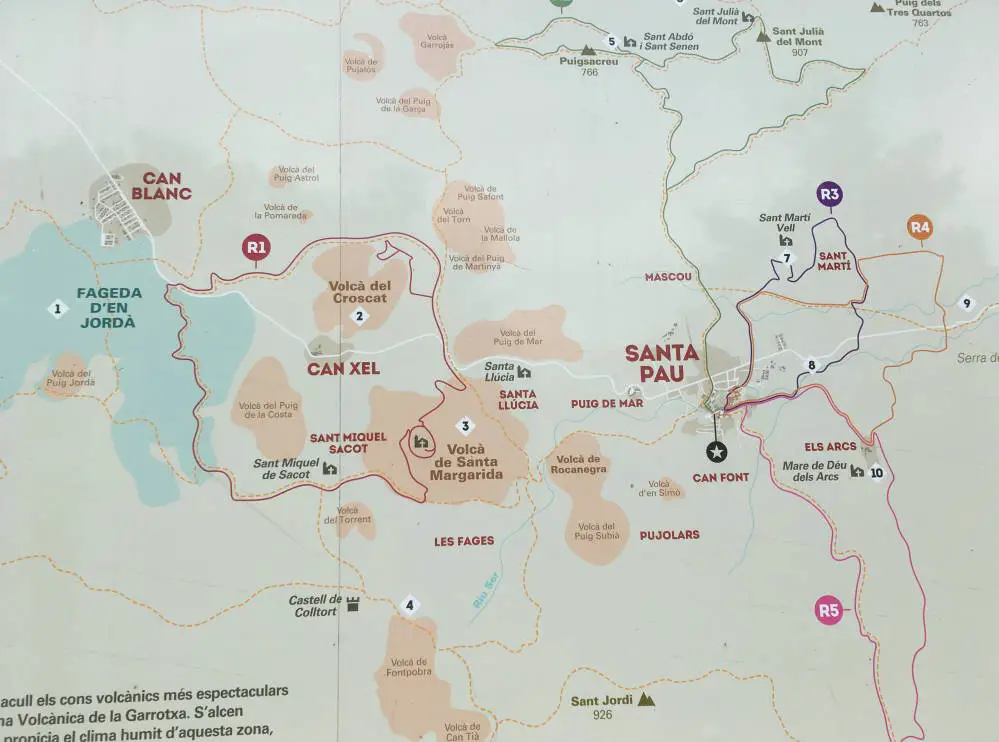
Map of Santa Pau
Zoom in to see the places mentioned in this article.
Santa Pau, Girona, Spain
Santa Pau, Girona, Spain
Santa Pau, Girona, Spain
Santa Pau, Girona, Spain
Santa Pau, Girona, Spain
Carrer Mirador, 17811 Santa Pau, Girona, Spain

